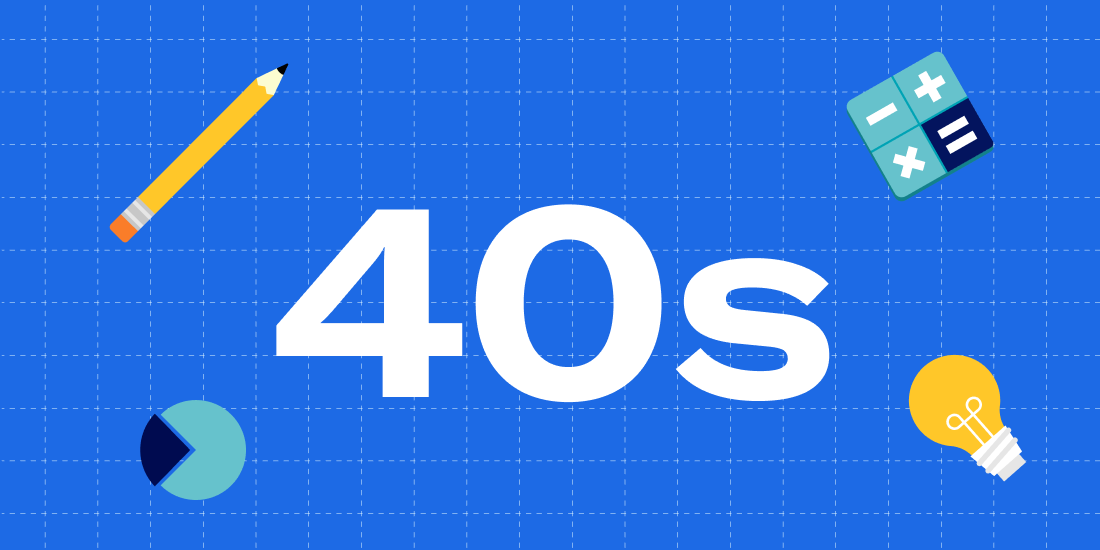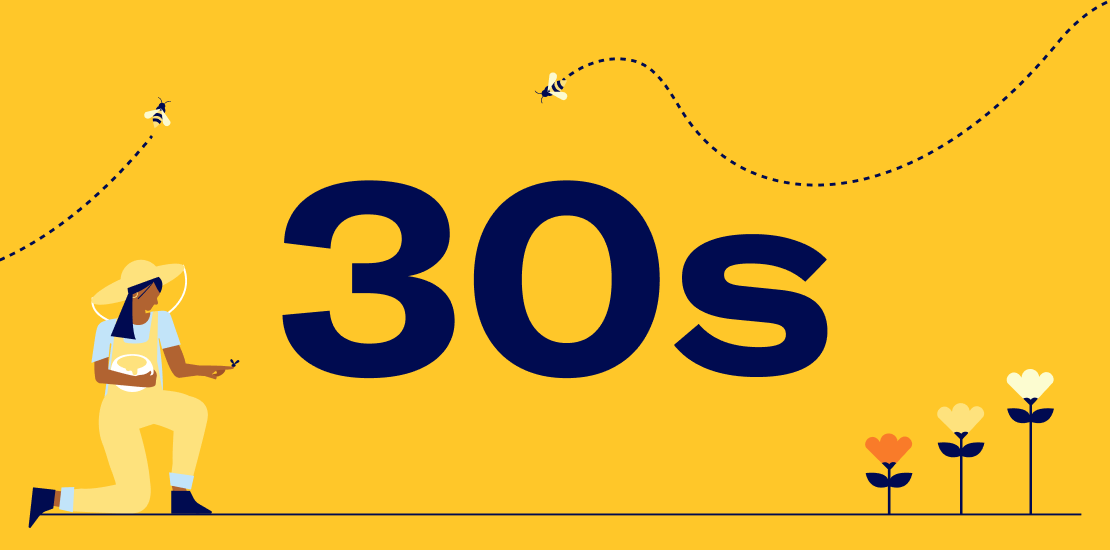Next Level Planning

-
![]()
Investing in Your 40s: 4 Financial Goals You Should Prioritize at Mid-Life
Investing in Your 40s: 4 Financial Goals You Should Prioritize at Mid-Life In your 40s, your priorities and investing goals become clearer than ever; it’s your mid-life opportunity to get your goals on track. It’s easy to put off planning for the future when the present is so demanding. Unlike in your 20s and 30s when your retirement seemed like a distant event, your 40s are when your financial responsibilities become palpable—now and for retirement. You may be earning more income than ever, so you can benefit far more from planning your taxes carefully. Perhaps you have increased expenses as a result of homeownership. If you have kids, now may also be the time that you’re thinking about or preparing to pay for college tuition. When all of these elements of your financial life converge, they require some thoughtful planning and strategic investing. Consider the following roadmap to planning your investments wisely during these rewarding years of your life. Here are four ways to think about goals you might prepare for. Preparing for Your Next Phase: Four Goals for Your 40s You may have already made a plan for the future. If so, now is a good time to review it and adjust course if necessary. If you haven’t yet made a plan, it’s not too late to get started. Set aside some time to think about your situation and long-term goals. If you’re married or in a relationship, you likely may need to include your spouse or partner in identifying your goals. Consider the facts: How much are you making? How much do you spend? Will your spending needs be changing in the near future? (Perhaps you're paying for day care right now but can plan to redirect that amount towards savings in a few years instead.) How much are you setting aside for savings, investments, and retirement? What will you need in the next five, 10, or 20 years? Work these factors into your short- and long-term financial goals. Pay off high-interest debt The average credit card interest rate is more than 20%, so paying off any high-interest credit card debt can boost your financial security more than almost any other financial move you make related to savings or investing. Student loans may also be a high-cost form of debt, especially if you borrowed money when rates were higher. If you have a high-interest-rate student loan (say more than 5%), or if you have multiple loans that you’d like to consolidate, you may want to consider refinancing your student debt. These days, lenders offer many options to refinance higher-rate student loans. There’s one form of debt that you don’t necessarily need to repay early, however: your mortgage. This is because mortgage rates are lower than most credit cards and may offer you a tax break. If you itemize deductions, you may be able to subtract mortgage interest from your taxable income. Many people file using the standard deduction, however, so check with your tax professional about what deductions may apply to your situation come tax time. Check that you’re saving enough for retirement If you’ve had several jobs—which means you might have several retirement or 401(k) plans—now is a good time to organize and check how all of your investments have performed. Betterment can help you accomplish this by allowing you to connect and review your outside accounts. Connecting external accounts allows you to see your wealth in one place and align different accounts to your financial goals. Connecting your accounts in Betterment can also help you see higher investment management fees you might be paying, grab opportunities to invest idle cash, and determine how your portfolios are allocated when we are able to pull that data from other institutions. There could also be several potential benefits of consolidating your various retirement accounts into low-fee IRA accounts at Betterment. Because it’s much easier to get on track in your 40s than in your 50s since you have more time to invest, you should also check in on the advice personalized for you in a Betterment retirement goal. Creating a Retirement goal at Betterment allows you to build a customized retirement plan to help you understand how much you’ll need to save for retirement based on when and where you plan on retiring. The plan also considers current and future income—including Social Security income—as well as your 401(k) accounts and other savings. Your plan updates regularly, and when you connect all of your outside accounts, it provides even more personalized retirement guidance. Optimize your taxes In your 40s, you’re likely to be earning more than earlier in your career–which may put you in a higher tax bracket. Reviewing your tax situation can help make sure you are keeping as much of your hard-earned income as you can. Determine if you should be investing in a Roth (after-tax contribution) or traditional (pre-tax contribution) employer plan option, or an IRA. The optimal choice usually depends on your current income versus your expected income in retirement. If your income is higher now than you expect it to be in retirement, it’s generally better to use a traditional 401(k) and take the tax deduction. If your income is similar or less than what you expect in retirement, you should consider choosing a Roth if available. Those without employer plans can generally take traditional IRA deductions no matter what their taxable income is (as long as your spouse doesn’t have one, either). You’ll also want to make sure you take advantage of all the tax credits and deductions that may be available to you. You may also want to check to see whether your company offers tax-free transportation benefits—including subway or bus passes or commuter parking. The value of these benefits isn’t included in your taxable income, so you can save money. You can also save money on a pre-tax basis by contributing to a Health Savings Account (HSA) or Flexible Spending Account (FSA). Health Saving Accounts (HSA) Health savings accounts (HSAs) are like personal savings accounts, but the money in them is used to pay for health care expenses. Only you—not your employer or insurance company—own and control the money in your HSA. The money you deposit into the account is not taxed. To be eligible to open an HSA, you must have a high-deductible insurance plan. Your 401(k) may be tied to your employer, however your HSA is not. As long as your health plan meets the deductible requirement and permits you to open an HSA, and you’re not receiving Medicare benefits or claimed as a dependent on someone else’s tax return, you can open one with various HSA “administrators” or “custodians” such as banks, credit unions, insurance companies, and other financial institutions. You can withdraw the funds tax-free at any time for qualified medical expenses. Flexible Spending Accounts (FSA) A Flexible Spending Account (FSA) is a special account that can be used to save for certain out-of-pocket health care costs. You don’t pay taxes on this money—this is a tax-favored program that some employers offer to their employees. If you have an FSA, remember that in most cases your spending allowance does not carry over from year-to-year. It’s important to find out whether your employer offers a grace period into the next year (typically through mid-March) to spend down your account. Before you waste your tax-free savings on eyeglasses, check what you can buy with FSA money—with and without a prescription. Any unused funds will be forfeited, so it’s a good idea to use up what you can. If you find yourself with more than you can spend, then you might want to adjust how much you’re allocating to your FSA. If you have children, start saving for college—just don’t shortchange your retirement to do it If you have children, you may already be paying for their college tuition, or at least preparing to pay for it. It’s advisable to focus on your own financial security while also doing what you can to save for your kids’ college costs. So, first things first, make sure you’re saving enough for your own retirement. Then if you have money left over, think about tax-deferred college savings plans, such as 529 plans. A 529—named for the section of the tax code that allows for them—can be a great way to save for college because earnings are tax-free if used for qualified education expenses. Some states even allow you to deduct contributions from your state income tax, if you use your state’s plan. (While each state has its own plan, you can use any state’s plan, no matter where your child will go to college.) An alternative is to put money away in your own taxable savings accounts. Some investors prefer this method since it gives them more control over the money if things change, and may be more beneficial for financial aid. Your 40s are all about taking stock of how far you’ve come, re-adjusting your priorities, and getting ready for the next phase of life. By working on your financial goals now, you can gain peace of mind that allows you to concentrate on important things like family, friends, work, and the way you want to spend this rewarding decade of your life. -
![]()
Investing in Your 30s: 3 Goals You Should Set Today
Investing in Your 30s: 3 Goals You Should Set Today It’s never too early or too late to start investing for a better future. Here’s what you need to know about investing in your 30s. In your 30s, your finances get real. Your income may have increased significantly since your first job. You might have investments, stock compensation, or a small business. You may be using or have access to different kinds of financial accounts (e.g. 401(k), IRA, Roth IRA, HSA, 529, UTMA). In this decade of your life, chances are you’ll get married, and even start a family. Even if you’ve taken this complexity in stride, it’s good to take a step back to review where you are and where you want to go. This review of your plan (or reminder to create a plan) is essential to setting up your financial situation for future decades of financial success. Don’t Delay Creating A Plan: Three Goals For Your 30s As always, the best thing to do is start with your financial goals. Keep in mind that goals change through time, and this review is an important step to make updates based on where you are now. If you don’t have any goals yet, or need some guidance on which investing objectives might be important for you, here are three to consider. Emergency Fund Sometimes your plan doesn’t go as planned, and having an adequate emergency fund can help ensure those hiccups don’t affect the rest of your goals. An emergency fund should contain enough money to cover your basic expenses for a minimum of three to six months. You may need more than that estimate depending on your career, which may or may not be one in which finding new work happens quickly. Also, depending on how much risk you want to take with these funds, you may need a buffer on top of that amount. Retirement Most people don’t want to work forever. Even if you enjoy your work, you’ll likely work less as you age, presumably reducing your income. To maintain your standard of living, or spend more on travel, hobbies or grandkids, you’ll need to spend from savings. Saving for your retirement early in your career—especially in your 30s–is essential. Thanks to medical improvements and healthier living, we are living longer in retirement, which means we need to save even more. Luckily, you have a secret weapon—compounding—but you have to use it. Compounding can be simply understood as “interest earning interest,”a snowball effect that can build your account balance more quickly over time. The earlier you start saving, the more time you have, and the more compounding can work for you. In your goal review, you’ll want to make sure you are on track to retire according to your plan, and make savings adjustments if not. You’ll also want to make sure you are using the best retirement accounts for your current financial situation, such as your workplace retirement plan, an IRA, or a Roth IRA. Your household income, tax rate, future tax rate and availability of accounts for you and your spouse will determine what is best for you. As you consider your goals, you may want to check out Betterment's retirement planning tools, which helps answer all of these questions. Also, if you’ve changed jobs, make sure you are not leaving your retirement savings behind, especially if it has high fees. Often, consolidating your old 401(k)s and IRAs into one account can make it easier to manage, and might even reduce your costs. You can consolidate retirement accounts tax-free with a rollover. If you have questions about your plan or the results using our tools, consider getting help from an expert through our Advice Packages. Major Purchases A wedding, a house, a big trip, or college for your kids. Each of these goals has a different amount needed, and a different time horizon. Our goal-based savings advice can help you figure out how to invest and how much to save each month to achieve them. Take the chance in your goal review to decide which of these goals is most important to you, and make sure you set them up as goals in your Betterment account. Our goal features allow you to see, track, and manage each goal, even if the savings aren’t at Betterment. -
![]()
Rolling over is more than a dog trick
Rolling over is more than a dog trick Three reasons why rolling over 401(k)s from former employers may make sense. Have money sitting in 401(k) accounts from former employers? If so, you’re not alone. Recent research estimates that there are more than 24 million “forgotten” 401(k) accounts, holding approximately $1.35 trillion dollars. Are any of those dollars yours? If so, you should consider rolling any old 401(k) into your new Betterment 401(k) – here’s why: 1. Get a comprehensive view of your retirement savings When you have accounts here, there and anywhere, it’s hard to get a handle on where you stand. By rolling them over to your Betterment account and consolidating your retirement assets in one place, you can ensure your portfolio is appropriately diversified, monitor your progress, and rest assured that your investments aren’t competing or canceling each other out. 2. Avoid fees! Every 401(k) plan comes with fees. If you have multiple 401(k)s, you are paying fees for all of those accounts! Betterment has fees too –but we use low-cost exchange-traded funds (ETFs) in our portfolios, helping to keep fees low. 3. Access personalized financial advice and service Whether you want to talk investment strategy or review your retirement account, Betterment has CERTIFIED FINANCIAL PLANNER™ professionals and a customer support team that’s easy to reach when you need them. Your plan may include complimentary access to our team of CFPs® or you can book a call for a one-time fee. Other options Since you have access to a Betterment 401(k) through your employer, it could make sense for you to roll old 401(k)s into your Betterment 401(k) for all the reasons outlined above. But you do have other options: Leave it where it is. Roll it into an IRA (Individual Retirement Account), either with Betterment or another financial institution. Cash it out – this will come with taxes and potentially fees, and your money will no longer be invested (and potentially growing) for your retirement. Ready to roll? In just a few clicks, you can start the rollover process to Betterment and be set up with an appropriate investment strategy for you. You’ll receive a personalized set of rollover instructions via email, with no paperwork required by us. Have a different kind of account to roll over? No problem. You can roll over your IRAs, pensions, 401(a)s, 457(b)s, profit sharing plans, stock plans, and Thrift Savings Plans (TSPs) to Betterment using the same simple process. If you've already claimed your account, you can click here to start your rollover. If you have any questions along the way, our team is ready to help: Send us an email: support@betterment.com Give us a call: (718) 400-6898, Monday through Friday, 9:00am-6:00pm ET -
![]()
Traditional and Roth 401(k)s
Traditional and Roth 401(k)s Not sure what the difference is between traditional and Roth contributions for your 401(k)? We’ll explain. Ever hear the terms traditional 401(k) and Roth 401(k) thrown around and wonder – what are they? Should I be using them? Are these the keys to untold levels of wealth and financial security?! Easy does it. There are no secret weapons or silver bullets for securing a financially fit future. That said, traditional 401(k)s and Roth 401(k)s can be important tools when building your retirement strategy, so let’s make sure you know what they are. And a fun fact to know right away: you can use both. What do they have in common? A traditional 401(k) and Roth 401(k) are tax-advantaged accounts that allow you to save and invest for retirement (the tax advantages given to these types of accounts are not available in many other investing accounts). They’re available to you as a workplace benefit offered by your employer, and they’re funded with contributions from your paycheck – you set the amount, either as a dollar or a percent. The idea behind both is that they make it easier to save and invest for retirement automatically, like a built-in part of your budget. So what’s the difference? The difference is in how they are tax-advantaged. Traditional 401(k) contributions are made with pre-tax dollars, while Roth 401(k) contributions are made with after-tax dollars. Here’s an example. Let’s say you earn $40,000 a year and make contributions into a traditional 401(k). The contributions go into the account before your paycheck is taxed (“pre-tax”), lowering your taxable income. So if you save $3,000 throughout the year, you’d be paying taxes on $37,000 rather than $40,000. In addition, the money that you contribute—and any earnings—grow tax deferred until you withdraw it in retirement. At that time, your withdrawals are considered ordinary income and you’ll pay federal and possibly state taxes depending upon where you live. And, if you want to withdraw money before you turn age 59 ½, you’ll also be subject to a 10% penalty unless you qualify for an exception. If you decide to contribute to a Roth 401(k), the money is deducted from your paycheck after taxes have been taken out. So your paycheck is taxed now, reflecting your full salary of $40,000, which includes the contributions into the Roth 401(k) account. Roth 401(k) tax benefits come into play when you withdraw the money at retirement. Because you already paid taxes, you can withdraw contributions—and any earnings—tax-free if you’re age 59 ½ or older and have held your Roth 401(k) account for at least five years. Short answer: Traditional 401(k)s can lower your taxes now, but you’ll likely pay taxes when you withdraw the money at retirement. Roth 401(k)s don’t save you on taxes today, but you likely won’t have to pay taxes when you withdraw the money at retirement. Which type of account should I use? It ultimately depends on your unique financial situation and retirement goals. Betterment is not a tax advisor, and we encourage you to consult one if you want help reviewing your finances and goals. As a general rule: If you expect to be in a lower tax bracket in retirement, consider contributing pre-tax dollars into a traditional 401(k) account now, and you’ll pay taxes later. If you expect to be in a higher tax bracket in retirement, consider contributing after-tax dollars into a Roth 401(k) account, and pay your taxes now. What if I’m not sure if my tax bracket will be higher or lower in the future? You’re definitely not alone! In which case, it may make sense to invest in both. You’re allowed to make contributions to both types of accounts, spreading your tax exposure around. 5% in a traditional 401(k) and 5% in a Roth 401(k) would give you a 10% total contribution rate (in line with what many experts recommend). What if I want to withdraw my money early—that is, before I turn age 59 ½? Let’s start with the Roth 401(k). Because you already paid taxes on your contributions, you can generally withdraw that portion of the money tax-free. The portion of the withdrawal that represents your contributions to the account will generally be not taxed (and not subject to the 10% penalty). The portion of the withdrawal that represents earnings will be taxable and potentially subject to the 10% penalty. Most early withdrawals from a traditional 401(k) are taxed as ordinary income plus a 10% penalty. There are some exceptions, such as permanent disability. The tax advantages and ramifications of retirement accounts can be complicated. As Betterment is not a tax advisor, we encourage you to consult one to help you make this important decision. One more fun fact - former U.S. Senator from Delaware, William Roth, is the father of after-tax retirement accounts. Enjoy sharing that little bit of trivia at your next cocktail party, on us.




